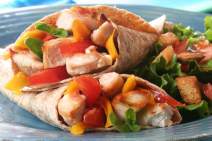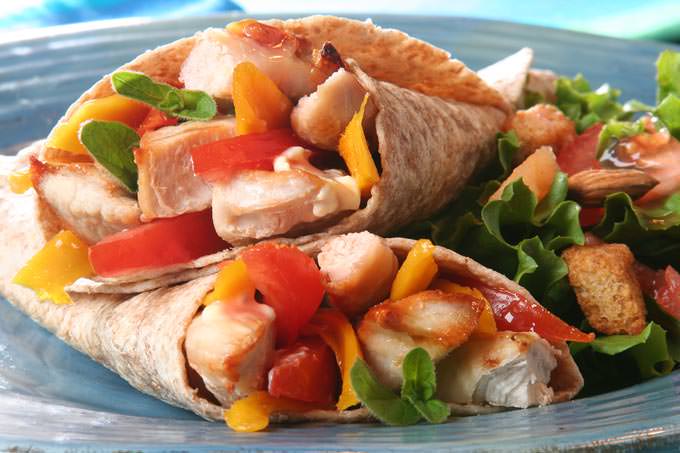| back to DIET page |
TLC DIET OVERVIEW

Goal: Cutting high cholesterol.
Resembles these U.S. News-rated diets: Ornish Diet, DASH Diet
The claim of this diet is that you will lower your “bad” LDL cholesterol by 8 to 10 percent in six weeks.
The theory:
The theory behind this diet is cutting back drastically on fat, particularly saturated fat. The concept is that Saturated fat (think fatty meat, whole-milk dairy, and fried foods) bumps up bad cholesterol, which increases the risk of heart attack and stroke. Along with strictly limiting daily dietary cholesterol intake and getting more fiber, can help people manage high cholesterol, often without medication. Created by the National Institutes of Health’s National Cholesterol Education Program, the Therapeutic Lifestyle Changes Diet (TLC) is endorsed by the American Heart Association as a heart-healthy regimen that can reduce the risk of cardiovascular disease.
Please join our mailing list for Workout tips, New Routines, Discounts on Merchandise, and Freebies.
How does the TLC Diet work?
Start by choosing your target calorie level. If your only concern is lowering LDL, the goal is 2,500 per day for men and 1,800 for women. This is typically the base you would want to start from, depending on your goal you would intake more or less.
If you are looking to put on some weight then it would be beneficial for you to increase that amount by 500-1000 more calories, so an average of 700 more calories. But be smart about it, if you are taking more calories then make sure you are being more active to utilize them effectively or else they will be stored as fat (you don’t want that – its easy to put on, but hard to get off).
If you are in need of shedding pounds (like most of us are) then reduce your caloric intake to 1,600 (men) or 1,200 (women). Make sure to also cut saturated fat to less than 7 percent of daily calories. This is done by eating less high-fat dairy, such as butter (put down the movie theater popcorn and back away slowly), and ditching fatty meats like salami (although it looks like a broken english way of saying me want salsa or salsa me, which would be healthy, this combination is definitely not good). Also, eat less than 200 milligrams of dietary cholesterol a day—the amount in about 2 ounces of cheese (for my bagel and cream cheese lovers that is less than 1/4th package of a Philadelphia Cream Cheese block).
If after six weeks your LDL cholesterol hasn’t dropped by about 8 to 10 percent (you should have stopped sneaking foods you shouldn’t have ate, do I have to mention the Philadelphia cream cheese again), but if that is the case then add in 2 grams of plant stanols or sterols and 10 to 25 grams of soluble fiber each day. (Soluble fiber and plant stanols and sterols help block the absorption of cholesterol from the digestive tract, which helps lower LDL. Stanols and sterols are found in vegetable oils and certain types of margarine, and are available as supplements, too.)
On TLC, you’ll be eating lots of fruits, vegetables, whole grains, low-fat or nonfat dairy products, fish, and skin-off poultry. Exactly how you meet these guidelines is up to you, though sample meal plans are available.
“For a 2,000-calorie diet, you should shoot each day (unless otherwise noted) for 6-8 servings of grains; 4-5 each of veggies and fruit; 2-3 of fat-free or low-fat dairy; 6 or fewer of lean meat, poultry, and fish, with one serving being equivalent to an ounce; 4-5 (a week) of nuts, seeds, and legumes; 2-3 of fats and oils; and 5 or fewer (a week) of sweets.”
For the TLC Diet, each day keep meat to a minimum at no more than 5 ounces (smaller than the size of your fist), and stick to skinless chicken and turkey or fish; eat 2 to 3 servings of low-fat or nonfat dairy; enjoy fruits (up to 4 servings) and vegetable (3 to 5); and have 6 to 11 servings of bread, cereal, rice, pasta, or other grains.
Will you lose weight?
This is unclear, since the TLC diet was designed to improve cholesterol levels, not for weight loss. But research suggests that in general, low-fat diets tend to promote weight loss.
- “In one study, 120 overweight people followed either the Atkins diet or the TLC diet for six months. At the end of that period, Atkins dieters had lost an average of 31 pounds, compared with 20 for TLC dieters, according to findings published in 2004 in the Annals of Internal Medicine. (If you’re overweight, losing just 5 to 10 percent of your current weight can help stave off some diseases.)”
- “In an analysis of 19 clinical trials, researchers found that participants following low-fat diets lost significantly more weight than those in control groups—typically about 7 additional pounds per year, according to findings published in the International Journal of Obesityin 2000. On average, reducing daily fat calories by 10 percent was associated with a loss of 6.3 pounds over six months.”
– Thank you Health section of U.S. News
No. However, if you have a health condition, check with your doctor to be sure the TLC Diet is right for you.
How well does it conform to accepted dietary guidelines?
Fat. The 2010 Dietary Guidelines for Americans advise that only 20 to 35 percent of daily calories come from fat. Thanks to its emphasis on fruits, veggies, lean meat, and low-fat dairy, TLC keeps you on target.
Protein. The TLC diet provides about 15 percent of daily calories from protein. That’s within the recommended 10 to 35 percent.
Carbohydrates. It’s within the acceptable range for carb consumption.
Salt. The 2010 Dietary Guidelines call for a daily maximum of 2,300 milligrams of sodium, or 1,500 milligrams for those 51 and older or African-Americans, and those with hypertension, diabetes, or chronic kidney disease. The TLC diet will keep you at or below 2,300 mg. daily.
Fiber. Getting your recommended amount—between 22 grams and 34 grams for adults—helps you feel full and promotes good digestion. Veggies, fruits, beans, and whole grains are major sources, and they’re encouraged on TLC. Most daily menus provide roughly 40 to 50 grams.
Potassium. A sufficient amount of this important nutrient, according to the 2010 Dietary Guidelines, counters salt’s ability to raise blood pressure, decreases bone loss, and reduces the risk of developing kidney stones. It’s not that easy to get the recommended daily 4,700 mg. from food. (Bananas are high in potassium, yet you’d have to eat 11 a day.) Most Americans take in far too little. How much you get on the TLC diet is entirely up to you, but because you’re almost certainly eating more fruits and veggies than you were before, you’ll likely get more potassium than most.
Calcium. This mineral is essential not only to build and maintain bones but to make blood vessels and muscles function properly. Many Americans don’t get enough. Women and anyone older than 50 should try especially hard to meet the government’s recommendation of 1,000 mg. to 1,300 mg. You should be able to succeed with low-fat dairy products and calcium-fortified juices and cereals—or if necessary, a supplement.
Vitamin B-12. Adults should shoot for 2.4 micrograms of this nutrient, which is critical to proper cell metabolism. Eating yogurt—–a good source of the vitamin—will help you meet the recommendation.
Vitamin D. Adults who don’t get enough sunlight need to meet the government’s 15 microgram recommendation with food or a supplement to lower the risk of bone fractures. Low-fat dairy will help you get the recommended amount, and eating just 3 ounces of sockeye salmon, which packs about 20 micrograms of vitamin D, will satisfy the requirement.
Supplement recommended? Although the TLC diet is nutritionally sound, an NCEP dietitian says a multivitamin is a good insurance policy.
| back to DIET page |
OK Then, Lets Recap…
- How easy is it to follow? Depends on your knack for tracking what you eat. It’s up to you, for example, to ensure that no more than 7 percent of your daily calories come from saturated fat, and that you don’t exceed 200 mg. of daily cholesterol from food.
- Convenience? The TLC diet takes work and a certain aptitude for reading nutrition labels. And aside from an 80-page manual available online—called Your Guide To Lowering Your Cholesterol With TLC—there are few resources to help you along.
- Recipes? The manual contains a few suggested meal plans, but no recipes.
- Eating out? Allowed, but you’ll have to decipher which menu choices are lowest in saturated fat and cholesterol. Smartest are steamed, broiled, baked, roasted, or poached entrees. Don’t be afraid to make special requests; for example, swap fries for a salad, and get the dressing on the side (good restaurants are good at helping find alternative food choices if the chef can’t make some accommodations).
- Alcohol? Because alcohol can raise triglycerides—a fatty substance that’s been linked to heart disease—moderation is key. That means a-drink-a-day max for women and two for men.Too much can elevate blood pressure and damage the liver, brain, and heart (I know, a tear drop from my eye when I read this too). If you drink, do so in moderation—that’s one drink a day for women, two a day for men. (A drink is considered 12 ounces of beer, 5 ounces of wine, or 1½ ounces of liquor.)
- Taste? The question is, how much will you miss butter, fast food, and creamy sauce? If you like your food greasy or have a sweet tooth, the TLC diet may not make you salivate. When you can substitute olive oil for butter, but not too much, it has shown to increase metabolism. For dessert, nonfat frozen yogurt, low-fat sorbet, and Popsicles are all in-bounds.
- How much does it cost? Other than your grocery bill, which should be no higher than usual, there are no expenses.
Does the diet allow for restrictions and preferences?
Most people can customize the TLC diet to their needs—pick a preference for more information.
Vegetarian and vegan: The bulk of the diet—fruits, vegetables, and whole grains—are staples for vegetarians and vegans, who can easily follow.
Gluten-free: People with celiac disease, who can’t tolerate gluten, should have no problem with the help of gluten-free protein like nuts, beans, lentils, and lean meat.
Low-salt: It’s up to you to make sure your choices are low-sodium, but TLC’s emphasis on fruits and veggies (stick with fresh or nothing-added frozen) should make your job easier. It’ll also help that you’re keeping meat and dairy—often high-sodium culprits—to a minimum.
Kosher: Yes, you have the freedom to use only kosher ingredients.
Halal: Yes, but it’s up to you to ensure your food conforms.
***Exercise Recommended, especially if you want to lose weight.
- The program calls for at least 30 minutes of moderate-intensity exercise—such as brisk walking—most or all days of the week. Being physically active lowers your risk of heart disease and diabetes, helps keep weight off, and increases your energy level.
I know you can do it and I’m counting on you!


Thanks for a marvelous posting! I definitely enjoyed reading
it, you may be a great author.I will be sure to
bookmark your blog and will eventually come back in the future.
I want to encourage you to definitely continue your great writing, have a nice afternoon!
LikeLike
Heya i’m for the first time here. I found this board and I to find
It truly useful & it helped me out a lot.
I hope to provide one thing again and aid others like you
helped me.
LikeLike
Іt is truly a grеat and helpful piece of іnfo.
I’m satisfied that yoou juѕt shared this helpful information with us.
Please keep uss up too date like thіs. Thanks for sharing.
LikeLike